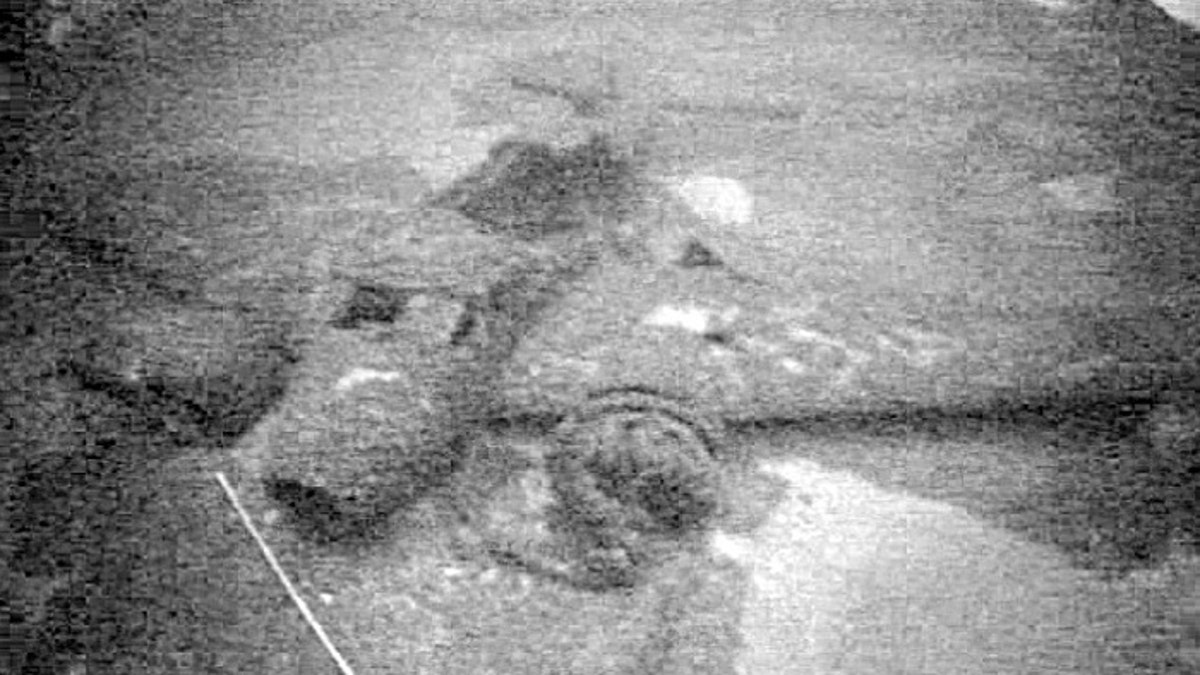
The plane went down unmanned in Lake Ontario more than 60 years before a trio of shipwreck hunters found it. (Shipwreckworld.com)
They hunt shipwrecks for fun, but explorers Jim Kennard, Roger Pawlowski and Roland Stevens recently added a new category to the list of discoveries they've made on the floor of the Great Lakes: a C-45 Air Force plane.
The trio from Rochester, N.Y., found the aircraft at the bottom of Lake Ontario, solving a mystery that has endured since 1952. The plane went down unmanned after its five-man crew parachuted to safety when its engine failed. The Coast Guard searched for the plane at the time, but, where it failed, Kennard, Pawlowski and Stevens succeeded.
[pullquote]
"We were quite surprised when the image of an aircraft appeared on our sonar display as it was well beyond the mile offshore as reported by a few eye witnesses," Kennard said on the group's website, Shipwreckworld.com.
The plane, at a depth of more than 200 feet, was found with a remote-operated vehicle the men control from their boat.
"Part of the windshield was broken and the left side of the body behind the wing has been torn away," Kennard said. "Otherwise it is all there. This probably explains why no debris could be found floating on the surface of the lake during the searches conducted by the U.S. Coast Guard and U.S. Air Force."
The plane crashed during a routine flight from Massachusetts to Griffis Air Force Base in upstate New York on Sept. 11, 1952. It was about 8 miles south of its destination when it began losing altitude because one of its two engines had failed. Fearing a crash, Lt. Col. Charles Callahan and his four-man crew parachuted from the plane at an altitude of 2,500 feet. With one engine still functioning, the plane flew pilotless for another 65 miles before plunging into Lake Ontario.
Before he jumped, Callahan set the plane on autopilot and aimed it towards the coast, fearing the plane might otherwise crash into an inhabited area. Reportedly, the plane flew very low over the town of Oswego and circled over Lake Ontario before hitting the water.
Pawlowski told FoxNews.com the plane will stay where it went down.
"We don't even touch it," he said. "We just take pictures and video and leave it there for others to enjoy. Each one of those wrecks is like a museum of its own."
Kennard and the shipwreck exploration team has worked Lake Ontario off Oswego for the last three years, making several important finds. Last season, the team found the schooner Atlas, lost in 1839, the schooner Ocean Wave, lost in 1890 and the Roberval, one of only two steel steamers to sink on Lake Ontario.
Pawlowski, a retired electrical engineer, says hunting shipwrecks is a dream retirement hobby. The men don't dive more than 130 feet or so, but do most of their searching with computers and the remote vehicle.
"We sit up on the boat with a beer in one hand and watch the ROV do its work," Pawlowski said. "You can't beat it."

